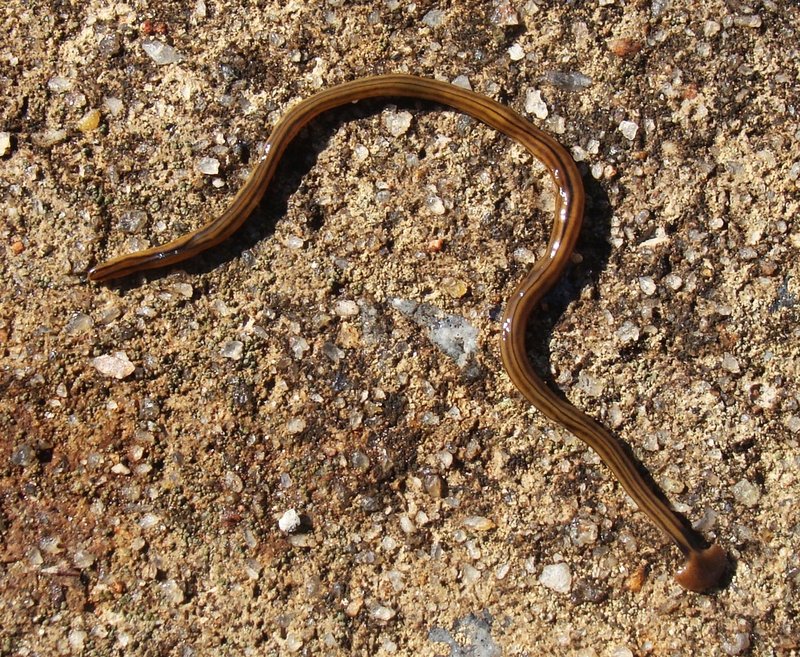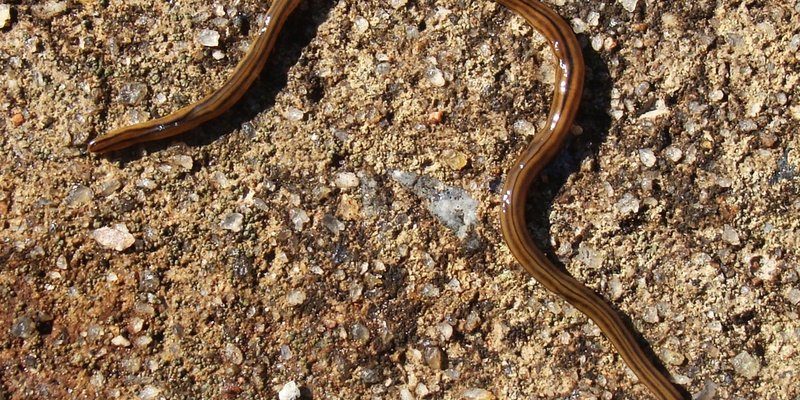
Flatworms, scientifically known as Platyhelminthes, belong to a unique group of invertebrates. They can be found in diverse environments, from freshwater streams to marine habitats and even in moist terrestrial areas. Their flat, soft bodies make them distinct and allow them to move effortlessly through their surroundings. But what exactly makes them tick? Let’s explore the world of flatworms, their characteristics, and why they matter.
Characteristics of Flatworms
Flatworms are often recognized by their slim, elongated bodies. Unlike many other worms, they lack a true body cavity and are typically bilaterally symmetrical—meaning their left and right halves mirror each other. This symmetry is a hallmark of more complex life forms. Honestly, if you were to compare a flatworm to a cookie, it would be the kind that’s been pressed flat—simple but interesting.
One key feature of flatworms is their lack of a specialized respiratory system. Instead, they absorb oxygen directly through their skin. This trait keeps them close to their environments and is crucial for their survival. Can you imagine having such a simplistic but effective way of breathing? It’s a reminder of how diverse life can be!
Flatworms come in three primary classes: Turbellaria, Trematoda, and Cestoda. Turbellarians are mostly free-living flatworms found in aquatic environments. Trematodes, known as flukes, are parasitic worms that often inhabit the bodies of other animals, while cestodes, or tapeworms, live in the intestines of their hosts. Each class has unique adaptations that help them thrive in their specific environments.
How Flatworms Move
You might be wondering how these fascinating creatures get around. Flatworms have a unique way of moving that can be both mesmerizing and a bit bizarre. Their movements resemble a wave-like action, and they use tiny, hair-like structures called cilia on their bodies to glide smoothly over surfaces. It’s almost like they’re doing a little dance!
In addition to cilia, flatworms can also contract their muscles for more powerful movements. This flexibility allows them to navigate through tight spaces, whether they’re hiding from predators or searching for food. Imagine trying to squeeze through a crowded room—that’s what a flatworm does when it’s moving through its aquatic home!
Feeding Habits of Flatworms
Flatworms have pretty interesting feeding habits. Depending on the class, they can be herbivores, carnivores, or parasitic. They often have a ventral mouth located on the underside of their bodies. Let me explain: the mouth opens into a pharynx that can extend out to grab food, much like a long, sticky tongue.
Free-living flatworms tend to feast on small organisms like protozoa, while parasitic types rely on their hosts for sustenance. For instance, tapeworms absorb nutrients directly from the host’s intestines. It’s a clever survival strategy, but not the most courteous one, right? Think of it as crashing a party uninvited and eating all the snacks!
The ability of some flatworms to regenerate lost body parts is another fascinating twist. If a flatworm loses a part of its body, it can regrow it—talk about a superpower! This ability is especially common in free-living flatworms and serves as an effective defense mechanism against predators.
Ecological Importance of Flatworms
You might not think of flatworms as essential players in the ecosystem, but they play crucial roles in their environments. They help control populations of smaller organisms, and their presence often indicates a healthy ecosystem. Think of flatworms as nature’s clean-up crew, helping to keep the balance in aquatic habitats.
In freshwater systems, flatworms serve as both prey and predator. Small fish and other aquatic creatures dine on them, while flatworms themselves consume even smaller organisms. This role in the food web is vital for maintaining ecological balance. It’s all interconnected, and every creature plays a part!
Additionally, flatworms can even serve as bioindicators for environmental health. If these creatures are thriving, it often means the ecosystem is in good shape. If their numbers dwindle or they disappear altogether, it can be a sign of pollution or habitat degradation. Flatworms are like tiny little watchdogs of the water!
Flatworms in Research and Medicine
Flatworms aren’t just fascinating in nature; they also have significant value in scientific research. Their capacity for regeneration and ability to reproduce asexually make them ideal subjects for studying developmental biology and regenerative medicine. Honestly, scientists are just scratching the surface of what flatworms can teach us about healing.
For instance, the study of planarians, a type of flatworm, has provided insights into how cells can be instructed to regenerate. Imagine if we could apply those lessons to human medicine! While we’re not there yet, the potential is exciting, and flatworms are helping pave the way.
In addition, some researchers are investigating the use of certain flatworm species for bioremediation—the process of using organisms to remove pollutants from the environment. The more we learn about these little creatures, the more we realize just how much they could contribute to solving complex environmental issues.
Common Misconceptions About Flatworms
When it comes to flatworms, misinformation can run rampant. One common misconception is that all flatworms are parasites. While it’s true that many live off hosts, plenty of flatworms are free-living and thrive independently. It’s important to distinguish between the types and appreciate the diversity within the group.
Another misconception is that flatworms are dangerous. While some parasitic flatworms can cause health issues in their hosts, most flatworms pose no threat to humans. They’re just going about their business in the ecosystem, often unnoticed. It’s easy to overlook these creatures, but understanding their role helps us appreciate the complexity of nature.
Finally, many people assume that flatworms have a simple life cycle. In reality, some flatworms undergo fascinating transformations, especially parasites like flukes and tapeworms. Their life cycles often involve multiple hosts and stages. It’s like they have the ultimate travel itinerary!
Flatworms might seem humble with their slimy, flat bodies, but they’re complex creatures with vital roles in their ecosystems. From their unique movement to their surprising adaptability, there’s so much to appreciate about them. Whether they’re acting as indicators of environmental health or providing insights in scientific research, flatworms are lurking around, bringing beauty and balance to nature.
So next time you see a flatworm—whether in a stream, a tide pool, or even in a science lab—take a moment to appreciate the remarkable life form it is. Understanding flatworms helps us connect with the world around us and appreciate the intricate web of life that surrounds us every day.

